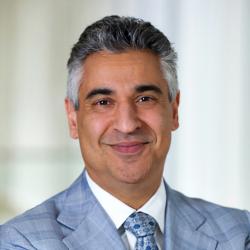Every summer, I look forward to live music. For a few brief weeks this year, as the coronavirus receded and restrictions were lifted, it seemed like I was about to get my wish. Yet within one month of my favorite outdoor venue announcing that it would move from cautious, socially distanced live music to hosting headliners at full capacity, delta was upon us. And we are almost as unprepared for this surge as we were for the surge at the end of 2020.
Just over a year ago, the AAMC released The Way Forward on COVID-19: A Road Map to Reset the Nation’s Approach to the Pandemic, with 11 evidence-based actions to curtail the spread of the coronavirus. Many simple recommendations in that report — such as the need for evidence-based use of face coverings — were plagued by political posturing; others, such as enhancing testing capacity, were not effectively acted upon.
Today, the AAMC Research and Action Institute has released a new report, The Way Forward Starts Now: Lessons From COVID-19, which, in planning the report, I had hoped could firmly focus on preparing for the next pandemic. But the recent resurgence of the coronavirus, and the resulting hospitalizations and deaths of tens of thousands of mostly unvaccinated people, has underscored the importance of addressing the inadequacies in our nation’s response to this pandemic not just for the next public health emergency — but to end this one.
While I hope you’ll take the time to read the entire 12-page report, a few recommendations stand out.
First, federal leadership, coordinated with state and local public and private entities, is critical. That leadership, in order to be effective, must come from the White House and be directly linked to the president of the United States. That leadership can be in the form of a czar, a designated official, or a task force with clear individual leadership that reports directly to the president. There are simply too many different agencies and departments within the federal government currently responding to the pandemic; the entire effort would benefit from a more coordinated response and accountability to a single individual.
Each task, every product, and all service lines also need to have clear, identifiable leadership in the form of an individual who reports (frequently and transparently) the status of, for example, the development of diagnostics and therapeutics, plans and readiness for acute care and prevention, or the grim task of body handling and disposal. Each of these critical services needs a clear supply chain that begins with real-time inventory translated into usable data reported both in frequent press conferences and on publicly available dashboards.
Second, collaboration among the public, private, and academic sectors needs to occur now (or at the beginning of any emergency), as it did with Operation Warp Speed, even if this means purchasing diagnostics, therapeutics, laboratory supplies, and vaccines before they have been developed.
Third, we need to decide, as a nation, how many people we are prepared to serve and for how long during the next public health emergency. Clinical supplies (masks, gowns, gloves, paralytics, analgesics, ventilator equipment, etc.) must be secured, whether we choose to support 125,000 people for a period of weeks or months, or 1 million people for a period of days. We need public targets and appropriate transparency into the status of our strategic national stockpile.
This work has to start now. Federal leadership could make many of these changes possible within months and implement the vast majority within the next three to five years. Other critical actions, such as ensuring we have enough health professionals to prepare for the worst, rather than the most rosy scenarios, will take much longer — but are no less critical.
Finally, we must ensure an ongoing commitment to basic science, clinical care, and public health that no longer robs Peter to pay Paul. Rapidly shifting our focus from one infectious disease to another, or diverting it from ongoing crises such as the opioid epidemic, will not serve us in the long run. What we do today will prepare us for the next public health emergency, as well as impact our ability to respond to the current crisis.
Next year, I intend to get back to live music. I know we all want to return to a safer, more secure nation where people don’t die needlessly. As always, thank you for taking the time to read this, and let me know what you think.

